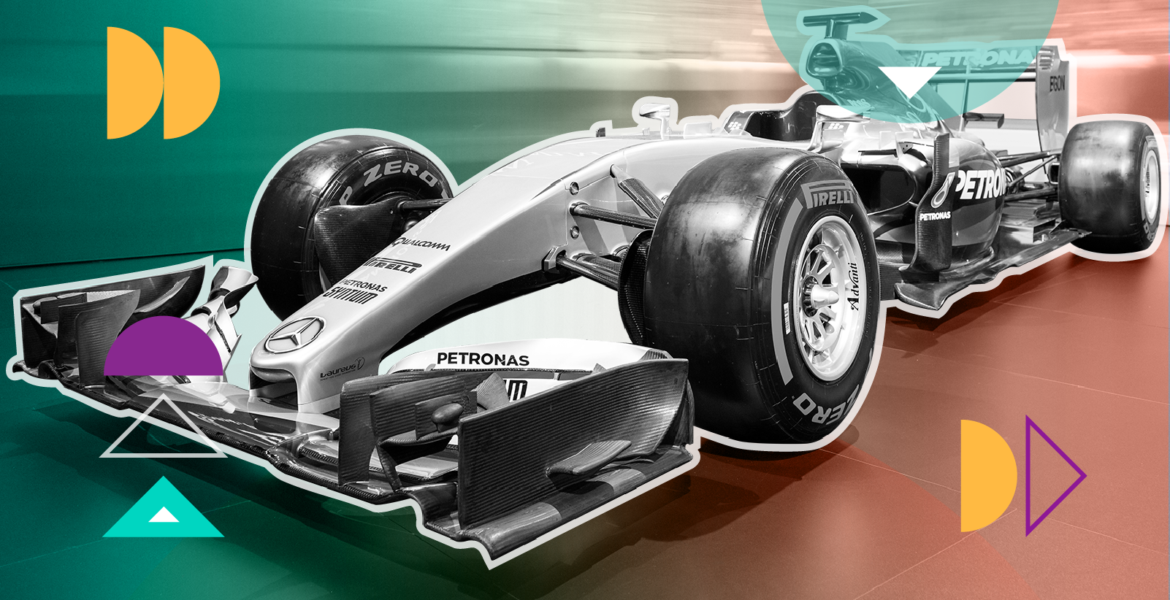By R. Larsson, Advertising Week
Formula 1 has long been synonymous with prestige, precision and high-net worth audiences. But in an era where luxury is being redefined, how does the sport continue to attract a premium fanbase? From the evolution of cultural advertising to the shifting landscape of sponsorships and the growing influence of social media, F1 has adapted to be both aspirational and accessible.
To explore this, we’ve gathered insights from top voices in advertising and sports marketing, examining how brands leverage F1’s global appeal, the role of influencers in shaping audience perceptions, and why premium sponsors continue to invest in the sport.
Here’s what industry leaders have to say about F1’s enduring pull with high-value consumers.
Ben Reilly, Business Development Director at Imagination
 F1 attracts a premium audience by delivering more than access – it delivers total immersion. From VIP hospitality and pit lane tours to high-tech fan activations, every detail is designed to bring fans closer to the action. Yacht-side luxury in Monaco, behind-the-scenes exclusives, and cutting-edge simulators transform spectators into insiders.
F1 attracts a premium audience by delivering more than access – it delivers total immersion. From VIP hospitality and pit lane tours to high-tech fan activations, every detail is designed to bring fans closer to the action. Yacht-side luxury in Monaco, behind-the-scenes exclusives, and cutting-edge simulators transform spectators into insiders.
It’s a sport where prestige attracts prestige. With brands like Mercedes, Aston Martin and Ferrari at its core, F1 naturally draws on affluent audiences that align with its high-performance, high-status image.
By blending spectacle with experience, F1 turns fans into advocates. It’s more than a race, it’s an elite lifestyle – and a powerful blueprint for brands looking to engage high-value audiences
Dean Field, Creative Director, Coley Porter Bell
 Everything about the F1 brand is high-end; it has established itself firmly at the glamorous end of sport. From its premium locations – Monaco, Singapore, Las Vegas – to its luxury car brands – Mercedes, Aston Martin, Ferrari – F1’s branding is elite and highly desirable. Its best performing drivers are treated like famous film stars – they are a select group, highly paid, members of small teams, competing in a dangerous sport where they put their lives on the line. It’s no wonder brands flock to them. Charles Leclerc has just partnered with luxury scotch whisky brand Chivas Regal, and Lewis Hamilton has collaborated with Tommy Hilfiger, IWC and Dior in the past.
Everything about the F1 brand is high-end; it has established itself firmly at the glamorous end of sport. From its premium locations – Monaco, Singapore, Las Vegas – to its luxury car brands – Mercedes, Aston Martin, Ferrari – F1’s branding is elite and highly desirable. Its best performing drivers are treated like famous film stars – they are a select group, highly paid, members of small teams, competing in a dangerous sport where they put their lives on the line. It’s no wonder brands flock to them. Charles Leclerc has just partnered with luxury scotch whisky brand Chivas Regal, and Lewis Hamilton has collaborated with Tommy Hilfiger, IWC and Dior in the past.
All these elements – teams, drivers, brands, locations, audience – mean F1’s premium associations are secured. And it’s why it commands an exclusive price point for entry. The cost of becoming an official Formula One partner varies between $20 million and $100 million, with race sponsorship sitting between $4 million and $8 million per race. Those brands are paying that premium because it gives them access to that premium audience.
Louise Johnson, Global CEO, Fuse
 Formula 1 has long been synonymous with premium audiences, backed by luxury, automotive, and B2B brands, like Rolex and Mercedes. Traditionally, its fanbase skewed older and male, but since 2017, under Liberty Media’s ownership, the sport has undergone a cultural shift. F1 is now using entertainment to engage new audiences, such as the F175 car launch at The O2, blending motorsport with music and comedy, and June’s Brad Pitt-led F1 movie.
Formula 1 has long been synonymous with premium audiences, backed by luxury, automotive, and B2B brands, like Rolex and Mercedes. Traditionally, its fanbase skewed older and male, but since 2017, under Liberty Media’s ownership, the sport has undergone a cultural shift. F1 is now using entertainment to engage new audiences, such as the F175 car launch at The O2, blending motorsport with music and comedy, and June’s Brad Pitt-led F1 movie.
Netflix’s Drive to Survive has also been a game-changer, fuelling a cultural renaissance that has opened F1 up to a whole new audience. But the sport’s digital-first approach, giving drivers more direct fan access through social media and gaming, has been just as transformative.
There’s also been a clear effort to boost female representation, from engineers and presenters to the F1 Academy. And with around 40% of F1’s fanbase now women, we’re seeing the likes of LVMH’s landmark 10-year deal and Charlotte Tilbury’s sponsorship of the F1 Academy cementing sport as the ultimate runway for luxury and beauty brands.
But it’s not just luxury labels. Mainstream consumer brands—KitKat, Lego, McDonald’s and Hot Wheels—are all getting involved, recognising F1’s power to drive engagement with the next-gen fan. Does this mean F1 is losing its premium sheen? Far from it. Instead, it’s evolving to remain relevant, seamlessly aligning itself with the cultural shifts shaping modern fandom.
Lou Fielding, Managing Director, Joint
 Formula 1 has evolved far beyond its roots as a male dominated motorsport spectacle. Today, around 40% of the global F1 audience are women and the fastest growing demographic is young women under 25. This shift has not only elevated the sport’s prestige but also cemented its appeal among high-net-worth individuals and aspirational consumers. The sport and the marketing playbook that surround it feel younger, more modern, more relevant.
Formula 1 has evolved far beyond its roots as a male dominated motorsport spectacle. Today, around 40% of the global F1 audience are women and the fastest growing demographic is young women under 25. This shift has not only elevated the sport’s prestige but also cemented its appeal among high-net-worth individuals and aspirational consumers. The sport and the marketing playbook that surround it feel younger, more modern, more relevant.
As our definitions of what makes something premium have evolved, so has F1. Gone are the traditional tropes of flashy wealth and high octane masculinity. Now we have more richness and more human emotion – rivalries, personal sacrifices, triumphs and struggles. The success of Drive to Survive showcases how storytelling can create high-stakes drama. And the teams have opened themselves up through social media to make the previously elite and untouchable more real.
Modern premium brands and their marketing teams know that connection through character and storytelling make people feel things. The more we feel, the more we desire to be part of their worlds. By letting the audience get closer to the inner workings of the teams and drivers, F1 has created a richer tapestry that resonates with today’s aspirational consumers.
William Holtam, Senior Designer, Saffron Brand Consultants
 Formula One is the ultimate stage where design, precision, and branding collide. Every high-speed manoeuvre is backed by some of the world’s most prestigious brands, making each race a thrilling showcase of innovation and luxury.
Formula One is the ultimate stage where design, precision, and branding collide. Every high-speed manoeuvre is backed by some of the world’s most prestigious brands, making each race a thrilling showcase of innovation and luxury.
As it’s exploded in popularity worldwide, some might think its luxury appeal through associations with premium sponsors like LVMH, including sub-brands Tag Heuer and Louis Vuitton, has been diluted. But F1 has two advantages that other brands don’t.
Firstly: the races themselves. If virtual access is ‘the great equaliser’, then IRL is the new luxury. And Formula 1 happens to have some of the most exhilarating experiences in some of the most beautiful places on earth. This season’s spectacular, first-of-its-kind launch event at London’s 02 arena is proof of the sport’s growing cultural influence.
Secondly: the drivers. Over the last few years, drivers have built their own personal brands which grow their popularity, and cement their status both as public figures and premium brand ambassadors.
This shift in popularity means that sponsors and advertisers need to rethink where they intersect with audiences besides traditional placements. They need to leverage F1’s unique ecosystem of events and drivers to curate experiences as premium as they are.







